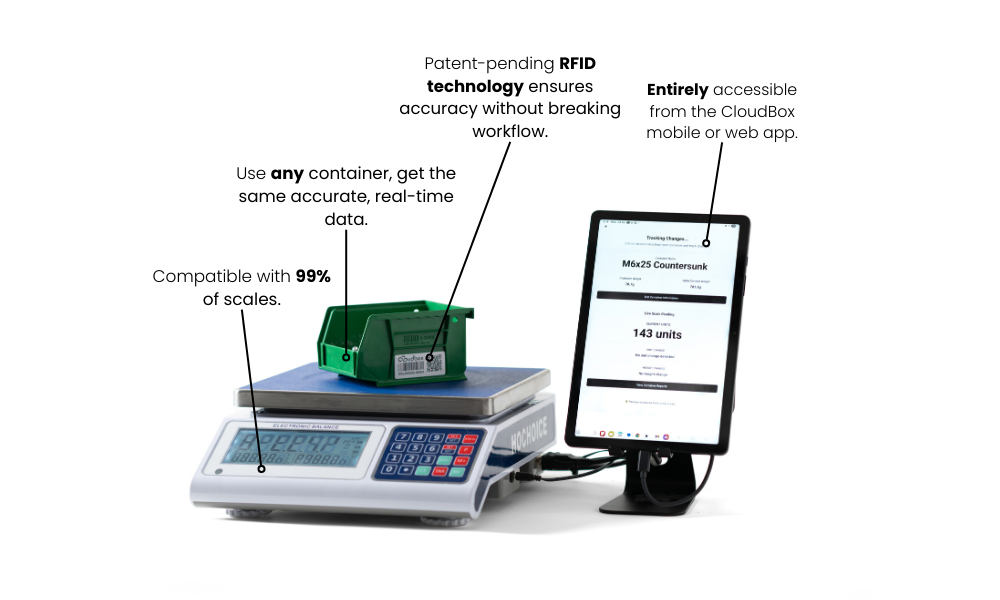.png)
Expansion is supposed to be the reward for doing things right. When you open a second location, a third warehouse, or a regional facility, it’s a sign that your operation is growing. But growth without infrastructure quickly turns into friction. And nowhere is that more evident than in your inventory.
Inventory management across multiple locations is a different beast than running a single store or stockroom. The challenges are subtle at first, then suffocating. That new layer of complexity reveals just how fragile your processes have become.
What used to work now causes bottlenecks. What used to be visible now lives in blind spots. What used to be a simple reorder is now a guessing game.
This isn’t a failure of effort. It’s a failure of systems.
Complexity Scales Faster Than Visibility
When you are only managing one location, you can get away with a lot. A manager’s intuition, a clipboard count, or an end-of-week audit might be enough to keep the wheels turning. But as soon as you add a second location, decisions start happening in parallel. Product moves without being seen. Errors multiply in silence.
Suddenly, inventory becomes a set of questions you cannot easily answer.
- Which location is running low?
- Where is product sitting idle?
- Can we shift stock between sites without delaying fulfillment?
- Are all teams following the same process?
These questions should have clear answers. If they don’t, your business is bleeding efficiency. You may not feel it right away, but the weight adds up. Every missed transfer, every over-order, every out-of-stock adds cost and erodes trust.
The Real Cost of Inventory Disconnection
Take a simple example. Your west side store is sitting on a pallet of slow-moving units. Your downtown store is completely out of the same SKU. If the two sites are not synced, you reorder from a supplier and miss the opportunity to balance your inventory internally.
Now you’ve paid for product you already had, and you’ve let a customer walk out empty-handed. The impact is operational, financial, and reputational.
The same problem happens in industrial manufacturing, in medical device management, in cannabis distribution. One site over-orders because they don’t see the surplus at another. Another site delays fulfillment because they didn’t realize the part they needed was sitting 30 feet away in a different bin.
All of it stems from the same root issue: a lack of shared visibility.
Real-Time Inventory Shouldn’t Be a Luxury
The solution is not to try harder. It is to replace the guesswork.
A connected inventory system turns chaos into control. When each container updates in real time, your entire operation gains a shared source of truth. Your team knows what is in stock, where it lives, how fast it moves, and what needs attention.
This doesn’t just solve errors. It builds accountability. It creates confidence in your numbers. And it scales without friction.
Autonomy at the Edge. Clarity at the Center.
Multi-location businesses need more than just data. They need clarity that empowers without suffocating.
Local teams should have the tools to manage their inventory day to day. But leadership needs a way to oversee all sites without micromanaging. That balance is only possible when every location is operating on the same system, with role-based access, automated audit trails, and simple dashboards.
A smart inventory system builds that foundation. It lets you trust your staff without losing visibility. It lets your staff make decisions without going blind.
Forecasting Becomes a Strength, Not a Liability
The more sites you operate, the harder it becomes to predict needs. Manual reorder points break down when demand varies by location, or when inventory starts moving between them.
But a connected system learns.
When you track real-time inventory movement across all locations, you start to see patterns. Seasonality, regional preferences, and SKU-level performance all become part of your reorder logic. You stop guessing. You start planning.
This is what turns inventory from a cost center into a strategic advantage.
Compliance Doesn’t Scale Without Systems
For cannabis dispensaries, pharmaceutical distributors, or any business operating under regulation, compliance becomes exponentially more difficult as you grow. One mistake at one site can compromise your entire license. A missing gram, a mistyped quantity, a skipped handoff—these are not clerical errors. They are liability triggers.
A real-time inventory system creates traceability from the source to the sale. It records product movement across every container, every transfer, and every staff interaction. And it creates a digital trail that regulators can verify without the drama.
Compliance is no longer a scramble. It’s built into the way you operate.
Growth Is Only Worth It If You Can Manage It
If you’re expanding, you are already winning. But staying ahead requires more than square footage. It requires clarity.
Inventory optimization is not just a cost saver. It is a growth enabler. It protects your cash flow, your customer experience, and your operational resilience. And it ensures that the things that made you successful at one location are not lost as you grow to ten.
Systems like CloudBox make this shift possible. Real-time inventory tracking, location-wide visibility, and smart compliance tools are no longer reserved for enterprise giants. They are tools for any operation ready to scale without compromise.
Because the real measure of growth is not just how far you reach. It is how well you manage what you’ve built.
.avif)






.png)
.png)




